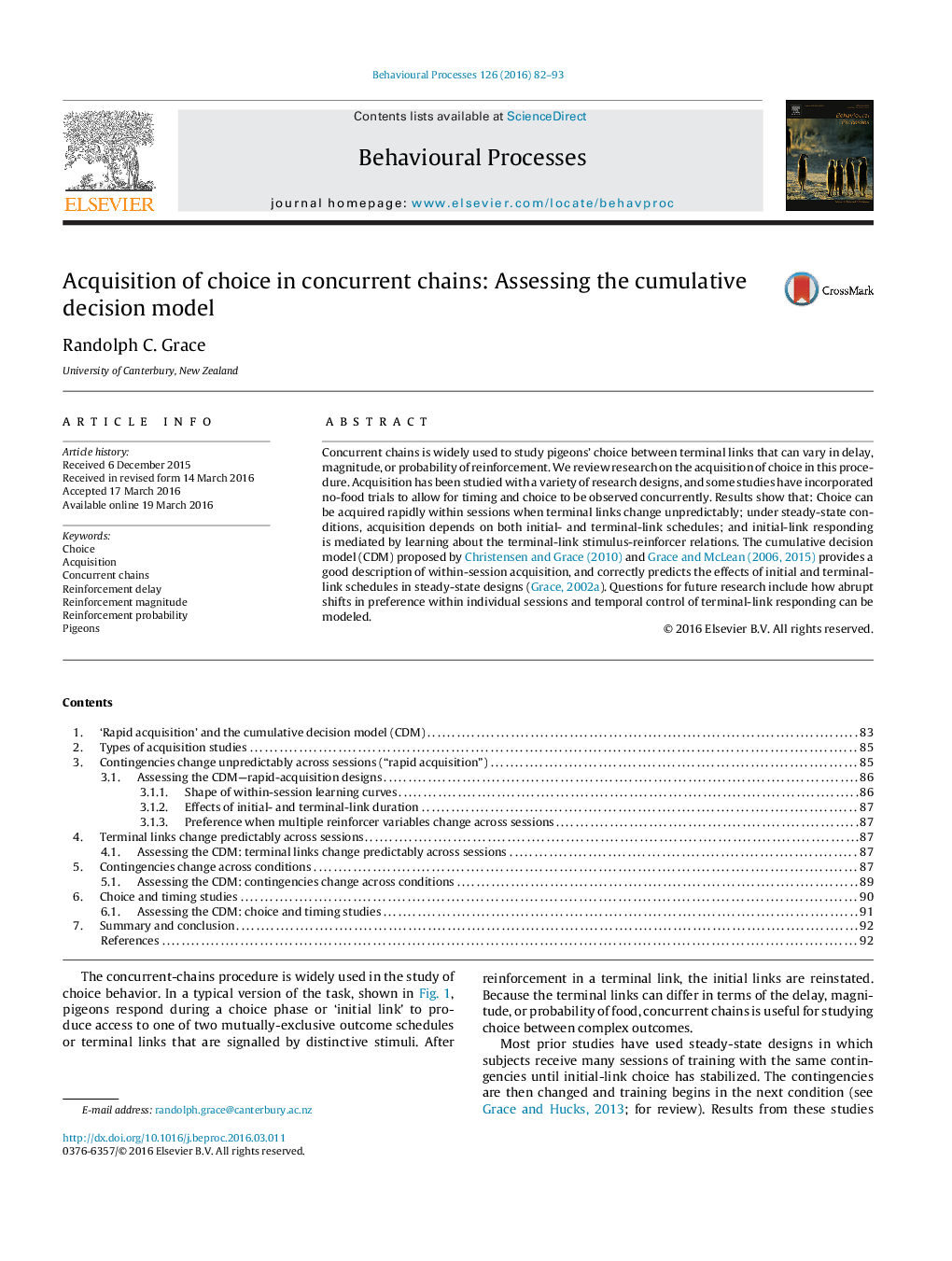| Article ID | Journal | Published Year | Pages | File Type |
|---|---|---|---|---|
| 8497104 | Behavioural Processes | 2016 | 12 Pages |
Abstract
Concurrent chains is widely used to study pigeons' choice between terminal links that can vary in delay, magnitude, or probability of reinforcement. We review research on the acquisition of choice in this procedure. Acquisition has been studied with a variety of research designs, and some studies have incorporated no-food trials to allow for timing and choice to be observed concurrently. Results show that: Choice can be acquired rapidly within sessions when terminal links change unpredictably; under steady-state conditions, acquisition depends on both initial- and terminal-link schedules; and initial-link responding is mediated by learning about the terminal-link stimulus-reinforcer relations. The cumulative decision model (CDM) proposed by Christensen and Grace (2010) and Grace and McLean, 2006, Grace and McLean, 2015 provides a good description of within-session acquisition, and correctly predicts the effects of initial and terminal-link schedules in steady-state designs (Grace, 2002a). Questions for future research include how abrupt shifts in preference within individual sessions and temporal control of terminal-link responding can be modeled.
Related Topics
Life Sciences
Agricultural and Biological Sciences
Animal Science and Zoology
Authors
Randolph C. Grace,
